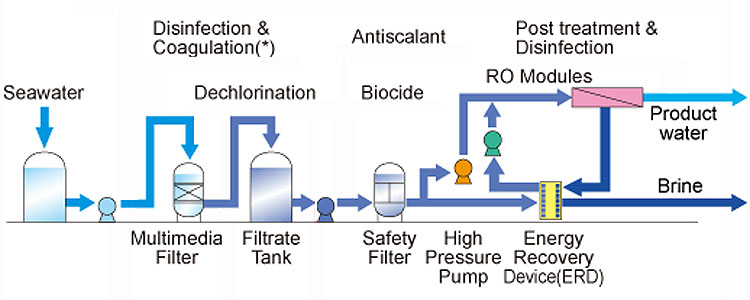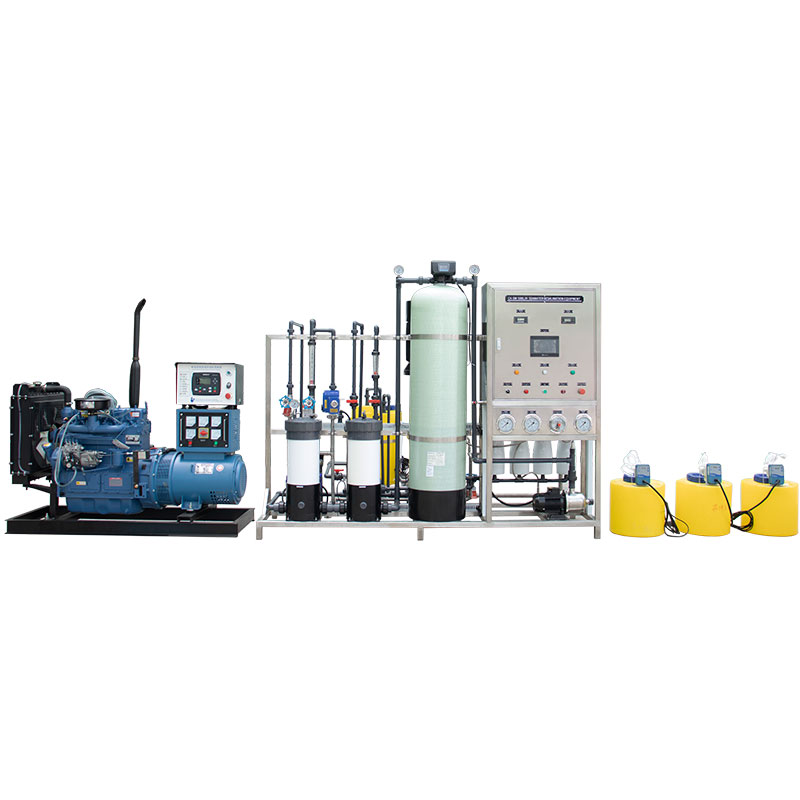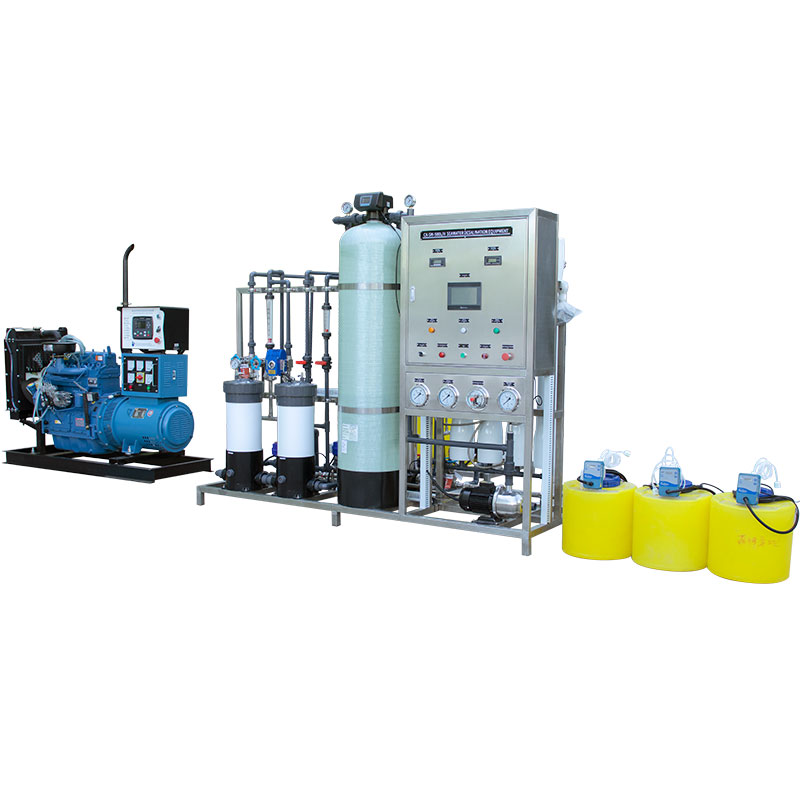What is the biggest problem with seawater reverse osmosis system?
Desalination, as an important way to obtain water resources, provides valuable freshwater resources to arid areas and island countries by removing salt from salt water and converting it into fresh water. However, there are also some problems in the seawater reverse osmosis desalination system. What is the biggest problem among them?
The biggest problems of the seawater reverse osmosis desalination system include the impact of waste brine and wastewater discharge on the marine ecosystem, the environmental pollution of wastewater containing toxic chemicals, and the impact of high saltwater discharge on marine life. Therefore, during the construction and operation of seawater desalination projects, effective measures and technical means need to be taken to reduce the negative impact on the environment and protect the health and stability of the marine ecosystem.
How seawater reverse osmosis desalination system works
The seawater reverse osmosis desalination system uses a reverse osmosis membrane to separate salt and other impurities in seawater to obtain fresh water. During this process, large amounts of waste brine and wastewater are discharged into the ocean, which may have certain negative impacts on the environment. The waste brine and wastewater produced by seawater desalination plants may contain toxic chemicals, such as chloride, bromide, etc., which may cause harm to the marine ecosystem and affect the survival and reproduction of marine life.

What are the environmental impacts of seawater reverse osmosis desalination system?
1. Wastewater discharge
The desalination plant produces a large amount of wastewater, which contains large amounts of salt and harmful chemicals. These wastewaters may be discharged directly into the ocean, causing pollution and damage to marine ecosystems.
2. Damage to coastline ecosystems
The construction of desalination plants often requires a large amount of coastline space, which may damage the local coastline ecosystem and affect the living environment of beach vegetation and animals.
3. Increasing competition for water resources
While desalination plants can address freshwater shortages, they can also increase competition for water resources. Because desalination plants require large amounts of water for their production processes, this can lead to competition with other water needs, especially in arid regions.

How does the seawater reverse osmosis desalination system solve the problem of waste brine discharge?
The methods of seawater reverse osmosis desalination system to solve the problem of waste brine discharge include deep brine discharge technology, brine recycling technology and multi-stage distillation and crystallization technology. By adopting these innovative technologies and measures, we can effectively reduce the impact of waste brine discharge on the environment, realize the resource utilization of waste brine, and promote the sustainable development of seawater desalination projects.
First, a common solution is to use brine depth drainage technology. This technology transports waste brine through pipelines to the deep ocean and releases it deep into the seabed, thereby avoiding direct impact on the surface ocean ecosystem. This method can reduce the negative impact of waste brine discharge on marine ecosystems and protect the living environment of marine life.Secondly, some desalination plants also use brine recycling technology. This technology re-extracts the salt and valuable minerals from waste brine and uses it for other industrial production or agricultural irrigation, thereby realizing the resource utilization of waste brine and reducing the negative impact on the environment.
Some desalination plants also use multi-stage distillation and crystallization technology to extract salt from waste brine and produce high-purity salt products for chemical production or other purposes. This method can not only reduce the discharge of waste brine, but also realize the resource utilization of waste brine and create economic value.

How does seawater reverse osmosis desalination system reduce environmental pollution?
Seawater reverse osmosis desalination system methods to reduce environmental pollution include wastewater treatment technology, energy recycling technology and energy conservation and emission reduction measures. By adopting these technologies and measures, the negative impact of the desalination process on the environment can be effectively reduced and the health and stability of the marine ecosystem protected.

First of all, the seawater reverse osmosis desalination system can use advanced wastewater treatment technology to effectively treat the generated waste brine and wastewater. Through multi-stage filtration, biodegradation, chemical treatment and other methods, harmful substances and pollutants in wastewater can be removed or degraded, thereby reducing the impact on the marine ecosystem.Secondly, the seawater reverse osmosis desalination system can use energy recovery and recycling technology to reduce energy consumption and emissions. For example, renewable energy such as solar energy and marine power can be used to drive seawater desalination equipment, reducing dependence on fossil energy and reducing carbon emissions and environmental pollution.
The seawater reverse osmosis desalination system can also take energy-saving and emission-reduction measures, optimize equipment design and operation management, and reduce energy consumption and emissions. For example, by optimizing reverse osmosis membranes and equipment structures, system efficiency and energy utilization are improved, and energy consumption and environmental pressure are reduced.






